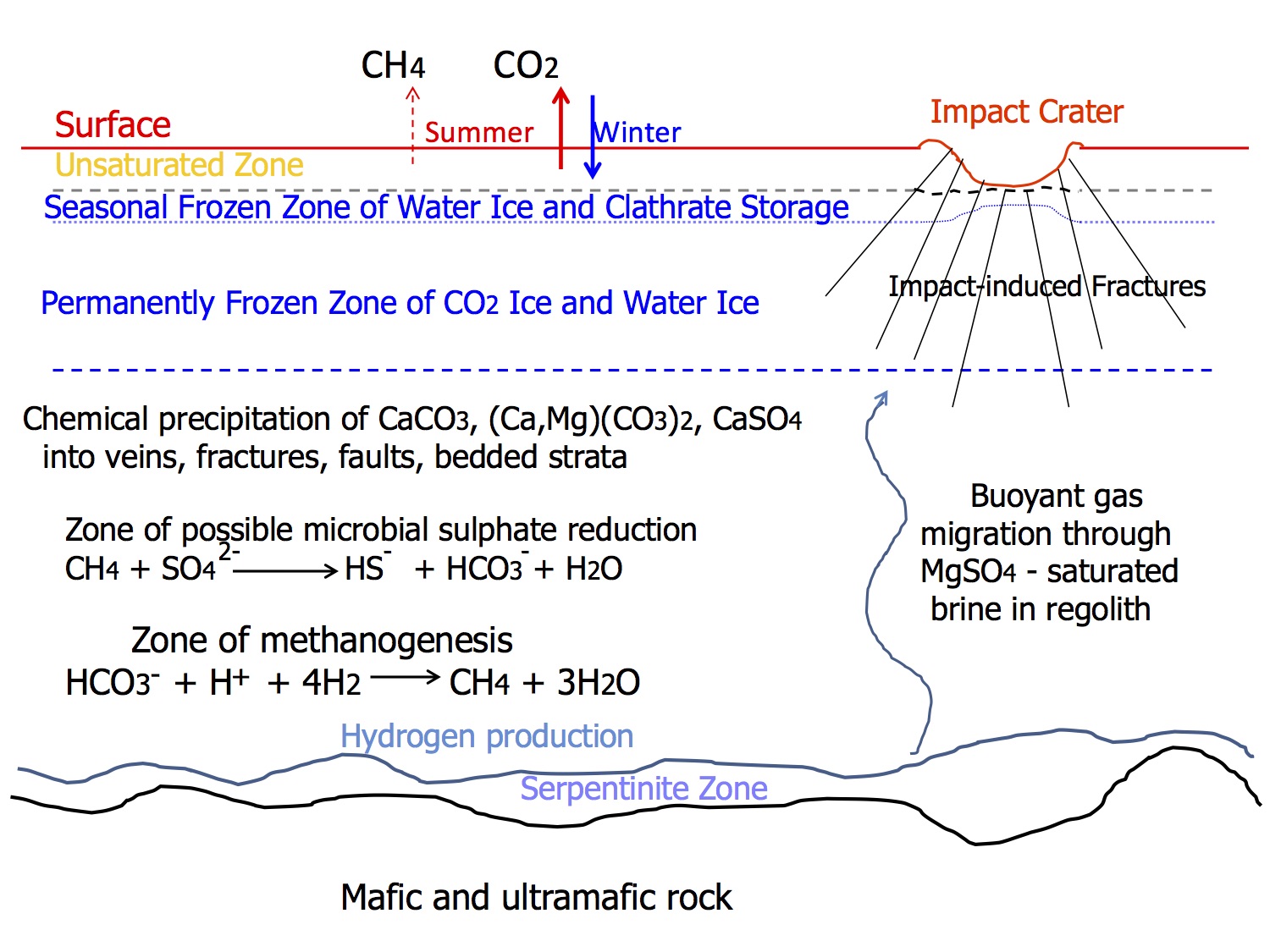Leaking secrets: Measuring gas seepage to determine the possibility of life on Mars

Humanity’s fascination with Mars—and the possibility of life on the red planet—has grown in recent years, and countless hours of study have gone into determining whether or not Mars would be able to provide sustainable life. Most of this research is based on what we already know about life on Earth and what makes it possible for organisms to not only survive but thrive.
Mines emeritus professor, Ron Klusman, has spent the past 30 years researching low levels of gas seepage from Earth into the atmosphere and the environmental changes caused by the release of those gases. While at Mines, in the period 1994-96, Klusman worked with three graduate students—M. Emmelyn Jakel PhD ’96, Michael P. Leroy PhD ’96 and Christopher J. Dick MS ’96—to set the stage for further understanding methane oxidation as it rises to the Earth’s surface. “There is a subtle emission of methane from the Earth that rises and falls due to seasonal change in rates of microbial oxidation,” Klusman said. This knowledge is applied to carbon dioxide sequestration, a process where large amounts of carbon dioxide are injected into the Earth for long-term storage to mitigate dangerous climate change.
Klusman’s subsequent research was mostly limited to Rangely, Colorado and Teapot Dome, Wyoming where he studied this injection process and measured gas seepage levels. In 1996, he began collaborating with Giuseppe Etiope, a colleague in Italy who expanded Klusman’s earlier methane seepage research to a global scale. “He really took over what I had started in terms of global emissions of gases from Earth as I focused on Rangely and Teapot,” Klusman said.
But this idea was taken even further in 2009 when it was first suggested that there may be a variable amount of methane in the atmosphere of another planet—Mars. “It was a very low concentration,” Klusman said. “It is totally unexpected if Mars is a dead planet.”
These suspicions were verified in 2012 when the Rover Curiosity transmitted ground level measurements of gas seepage from Mars into the planet’s atmosphere. Etiope encouraged the organizers to invite Klusman to give a presentation at the Methane on Mars-II workshop in June 2016 on how methane seepage works on Earth and how to measure it. This idea was applied to Mars and how our knowledge of these processes on Earth could be applied to similar findings on the red planet. “Subsurface generation of methane on Mars has been developed since,” Klusman said. “It points to the process where you can have seasonal or episodic emission due to meteorite impact on Mars’ surface that creates fractures deep enough to allow methane to escape. Ultimately, methane is produced biologically in the subsurface in my current opinion.”
Klusman said that he was attracted to the opportunity to lend his knowledge and experience due to the fact that he had very little knowledge of Mars before attending the workshop. “Prior to the workshop, I started learning about Mars and why seepage on Earth may have some usefulness in understanding what’s happening on Mars.” If it weren’t for Etiope’s suggestion to look at gas seepage as the source of the variations scientists were finding in Mars’ atmosphere, Klusman may have never been involved with Mars research. Now, Klusman says that it is good to obtain a working knowledge of concepts beyond a particular field of study because science is so often interconnected. “The study of planets itself has to involve people from different backgrounds—geology, chemistry, geophysics, geochemistry.” He presented an overview of the earlier research and on Mars in a Department of Chemistry/Geochemistry seminar on December 9, 2016.
Much of the red planet may still be a mystery to scientists, and there is certainly still a lot to discover in terms of understanding the potential for life on Mars. But using our knowledge of the Earth and the many factors that contribute to sustaining living organisms, we are getting closer to unlocking Mars’ secrets.


